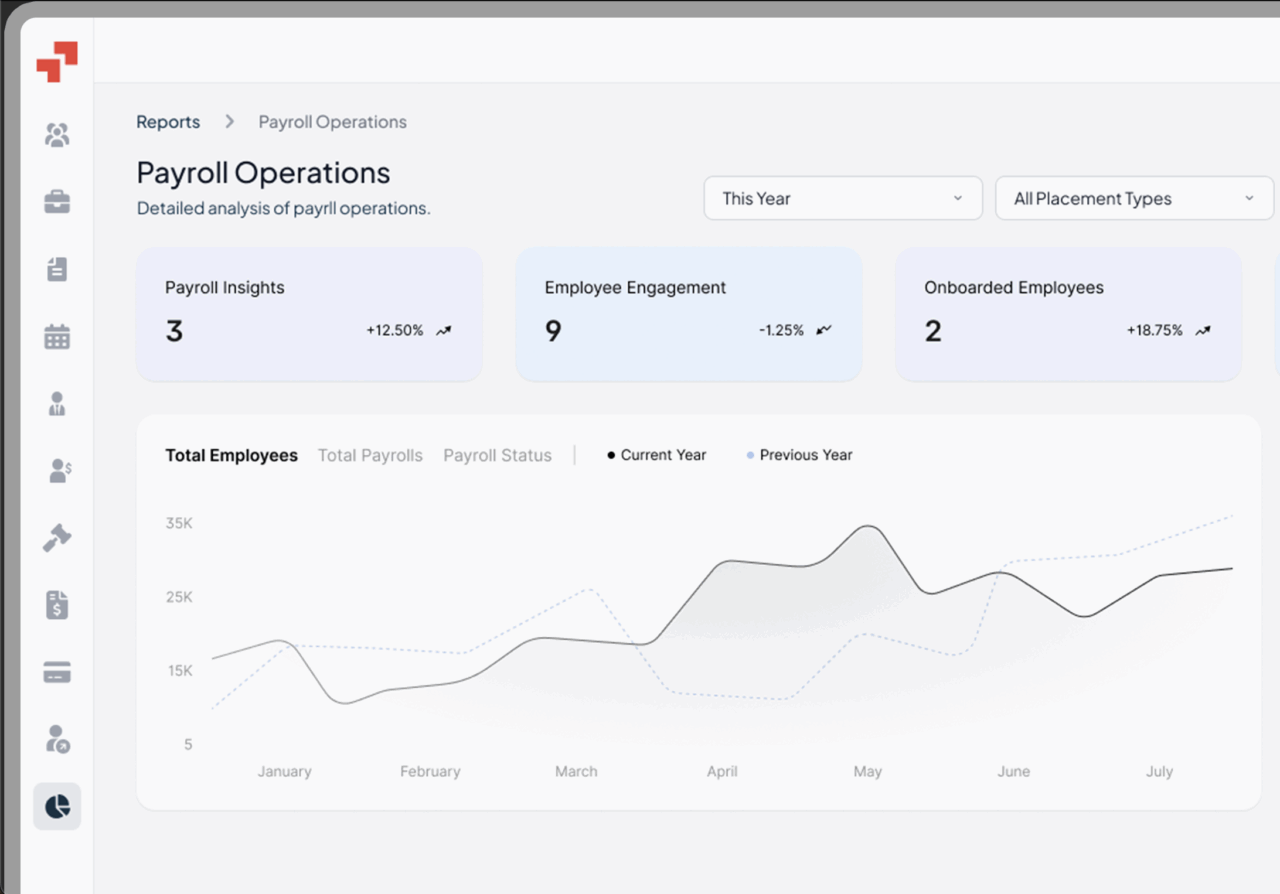Global Workforce GlossarySalaried Employee
Related Terms
Annualized Salary
Exempt Employee
FTE (Full-Time Equivalent)
Wages
Compensation Package
In today’s evolving global workplace, the term salaried employee often surfaces in discussions about hiring models, compensation, and compliance. But what does being salaried actually mean — and how does it impact your tax, rights, including the typical hours in a workweek. For businesses expanding internationally or managing a global workforce, understanding this classification is essential to ensure compliance and effective payroll management.
Table of Contents
- What is co-employment?
- What are co-employment laws?
- Why is co-employment a risk?
- What are co-employment rules
- Co-employment do’s and don’ts
- How does co-employment work?
- What is the difference between co-employment and joint employment?
- Co-employment vs PEO
- Co-employment vs employee leasing
- Is co-op considered a full-time employee?
- Is it illegal to work for two jobs in the same industry?
- Co-employment examples
- Practical Case Study Example
- PamGro and Co-employment: Your Global Partner
What is a Salaried Employee Type?
A salaried employee refers to a worker who earns a fixed, regular payment—usually monthly or biweekly—regardless of the number of hours worked. Unlike hourly employees, their compensation isn’t tied to time tracking but to the job role and performance expectations. A salary is usually expressed as an annual sum, e.g., $50,000 per year.
In many countries, salaried employees are categorized as either exempt or non-exempt. Exempt employees are typically not entitled to overtime pay under labor laws such as the U.S. Fair Labor Standards Act (FLSA), meaning they are often exempt from overtime.
Non-exempt employees, even when salaried, must receive overtime if they exceed standard working hours. The distinction depends on salary level, payment structure, and job duties—not just job title. To be considered exempt, employees must be paid at least $684 per week or $35,568 per year under the FLSA.
Who Can Be a Salaried Employee?
Practically any employee can be placed on a salary basis if the employer chooses. However, whether they are considered exempt depends on strict legal tests related to their duties and salary threshold.
Executives, administrative professionals, and highly compensated employees often meet exemption criteria. On the other hand, employees performing routine or non-managerial tasks are categorized as nonexempt employees, even if paid a salary. Salaried roles typically involve higher-level responsibilities, including managerial or decision-making tasks. Employers must comply with local labor regulations when classifying salaried employees, ensuring proper benefits, minimum wage, and overtime pay where required.
How Can a Salaried Employee Save Tax?
Salaried employees can reduce their tax burden through deductions, allowances, and strategic financial planning based on the laws of their country. Salaried employees usually enjoy predictable income, making budgeting and financial planning easier.
For example, contributions to retirement funds, health insurance, or education savings plans may be deductible. Many countries also allow exemptions for housing, commuting, or professional expenses. Salary structuring, when done correctly, can enhance take-home pay while staying compliant with tax rules.
When working internationally or under multiple tax systems, partnering with an Employer of Record like PamGro ensures that income, deductions, and social contributions are managed in accordance with local tax laws—eliminating errors and optimizing net income.
What Are the Rights as a Salaried Employee?
Salaried employees enjoy a range of statutory rights and benefits defined by national labor codes. These often include:
- Paid leave (annual, sick, parental)
- Public holiday entitlements
- Social security or pension benefits
- Protection from wrongful termination or wage deductions
- Safe workplace conditions and equal opportunity rights
Non-exempt salaried employees also receive overtime or compensatory leave for extra hours worked. While exempt employees may not qualify for overtime, employers must also ensure to pay non exempt employees properly for their hours worked, as they are still entitled to fundamental labor protections and fair treatment under local employment law.
How Many Hours Should a Salaried Employee Work?
The expected work hours for a salaried employee vary across countries and industries. Generally, a standard workweek is around 35 to 40 hours, though exempt employees may occasionally work beyond these hours without additional pay. The standard working hours for salaried employees are 40 hours per week in the United States.
For example, the EU Working Time Directive limits working hours to 48 per week, including overtime. In contrast, the U.S. FLSA doesn’t restrict hours for exempt employees but mandates overtime for non-exempt workers who exceed 40 hours weekly. Employers should clearly define expectations in the employment contract to avoid disputes or burnout.
Salaried vs. Hourly Employee: What’s the Difference?
The fundamental difference lies in how compensation is calculated:
- Salaried employees earn a fixed regular income, offering financial predictability and stability.
- Hourly employees are paid for each hour worked and receive overtime pay when they exceed the standard limit.
While salaried roles typically signal managerial or professional positions, hourly jobs offer more flexibility and direct overtime benefits. The choice between the two depends on the nature of the work, employee preference, and compliance obligations.
Salaried Employee vs. Consultant: Key Differences You Should Know
A salaried employee works directly under an employer’s supervision, receiving consistent pay, statutory benefits, and legal protections. A consultant, however, operates as an independent contractor—managing their own taxes, benefits, and work schedule.
Employees are part of the company’s structure; consultants are external service providers. Misclassifying a consultant as an employee—or vice versa—can lead to penalties and back taxes. Global EORs like PamGro help businesses properly classify and manage their workforce across borders, ensuring compliance with local labor and tax regulations.
Is Hourly or Salaried Employment Better for Taxes?
The tax outcome depends on the country’s tax structure, income level, and available deductions. Salaried employees often benefit from predictable tax withholdings and employer-provided deductions, while hourly workers might experience fluctuating taxable income.
In some countries, salaried roles qualify for employment-related exemptions, while contractors or hourly workers may claim business expenses instead. Employers managing global teams through PamGro benefit from automated, locally compliant payroll calculations that optimize tax treatment for both salaried and hourly workers.
Advantages and Disadvantages of Being a Salaried Employee
Advantages of Being a Salaried Employee
- Steady, predictable income
- Access to paid leave and benefits
- Easier budgeting and financial stability
- Often associated with professional growth and advancement
- Simplified payroll and reporting
- Salaried positions are generally associated with a clearer career path and greater opportunities for professional growth.
Disadvantages of Being a Salaried Employee
- Limited overtime pay (for exempt employees)
- Higher workloads without proportional compensation
- Less flexibility in work hours
- Potential for burnout if work-life balance isn’t maintained
- Salaried employees are expected to commit to their job responsibilities, which may require extended hours beyond standard work periods.
While salaried employment brings stability, it’s essential for employers to ensure fair expectations and clear policies to prevent overwork.
Example to Understand a Salaried Employee
Case Study:
A UK-based technology startup wants to hire a marketing manager in Brazil without setting up a local entity. Through PamGro’s EOR solution, they onboard the employee on a local employment contract as a salaried professional, earning a fixed monthly income.
PamGro manages payroll, benefits, and tax withholdings in line with Brazilian labor laws. The employee receives standard benefits like healthcare, paid vacation, and social contributions, while the company remains fully compliant. This model provides both stability for the employee and expansion flexibility for the company—without the need for a local office.
PamGro: Your Partner for Global Exapansion
Hiring salaried employees across countries can be complex, involving compliance with local labor laws, including the minimum salary requirement payroll taxes, and benefits. PamGro’s Employer of Record (EOR) services simplify this process by acting as the legal employer on your behalf. From payroll management and tax deductions to benefits administration and compliance audits, PamGro ensures both hourly and salaried employees are managed efficiently, wherever they are based.
Empower your business to expand confidently and compliantly—partner with PamGro for seamless global hiring and payroll management.
FAQ: Salaried Employees
Not always. Employers must pay employees fairly, as only non-exempt salaried employees are eligible for overtime, depending on jurisdiction and job duties.
Generally no, unless the deduction complies with legal exceptions such as unpaid leave or disciplinary reasons, within the specific pay period.
It depends on priorities. Salary provides stability, while hourly pay offers compensation flexibility and direct overtime
Yes. Most countries set a minimum salary threshold that aligns with local minimum wage standards.
Yes. Remote work is increasingly common, and employers use EOR platforms like PamGro to legally employ salaried remote workers across borders.
Hire the Best Talent, Anywhere






